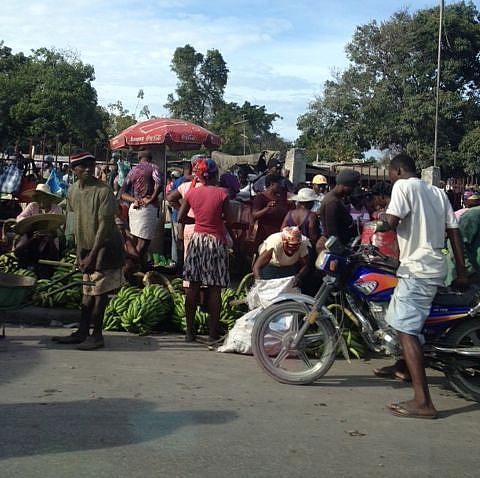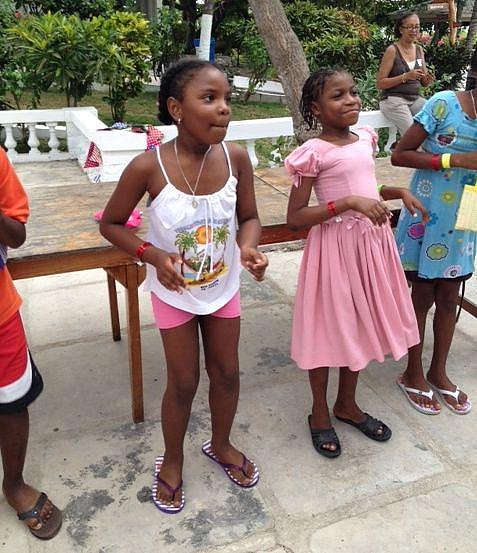As Haiti's Rebuilding Continues, Camp Helps Children Manage Their Diabetes

The streets of Port-au-Prince
Francine Kaufman, MD, wrote this account of her experience as a pediatrician and diabetes specialist in Haiti on her cell phone. Since the earthquake, Fran has been going to Haiti annually and sharing her experiences with Reporting on Health.
When we arrived in Port au Prince we could immediately see that things in Haiti had improved since our inaugural diabetes camp for kids one year ago. The airport runway and unloading docks were devoid of the clutter we saw last time and we entered a just recently opened terminal that was much more like other developing world airports. Clean, sparse, with what you’d expect at an airport -- a baggage claim section, small restaurants, clean bathrooms and an easy exit to the parking lot -- not like the past when you had to walk through a crowd of 200 people all trying to “help” carry your luggage, find you a ride, etc.
Our trip to our hotel also showed that Haiti is improving after the earthquake. More of the roads were paved, most of the rubble was gone, some of the collapsed buildings had been removed, and we saw a few new construction sites. The streets were still crowded with people and commerce, and people darted dangerously into the middle of the road. Most people in Haiti make money in the underground economy so getting around is key to their existence.
This year our diabetes camp is taking place in the North, along the beautiful coast and in what could be considered a resort. The ocean view is magnificent, the sandy beach narrow but calm, and the vegetation luscious. For a minute, we could almost forget we are in Haiti, but when we focus down, on the hotel that is housing our camp, the people all around, and the children with diabetes, it is impossible to escape reality.
The hotel is pretty run down, the menu replete with goat and conch, and the healthiest thing to drink (or eat) is Coca-Cola. The children -- our campers -- are amazing. Many of them are away from home for the first time. They have never been to a hotel or a restaurant. Some of the little ones have come with their parents, both because we don’t have the staff to take care of them and also because their parents are too fearful to leave them.
When the 43 campers first arrived, they sat patiently in their chairs for over 45 minutes while we assessed their diabetes and overall Two campers from last year return
And again like last year, many did not take their insulin the morning they arrived in camp. Most left home at the crack of dawn -- by themselves -- and they weren’t sure when they would arrive and what food we would have. So they treated their constant food insecurity the way they usually do -- by not taking their morning insulin injections.
We suppose the most shocking thing today was that we had to show the kids how to use their bathroom and shower. Many had never seen a fully equipped bathroom with a toilet, sink and shower together. Many still live in tents, the estimate is that at least 300,000-400,000 people are still in tents in Haiti (down from over 1.2 million right after the earthquake and 700,000 when we were here last year), and many others have been moved from tents to prefab 12X12 plywood houses with no electricity or running water. This is a better option but certainly not a long-term solution.
